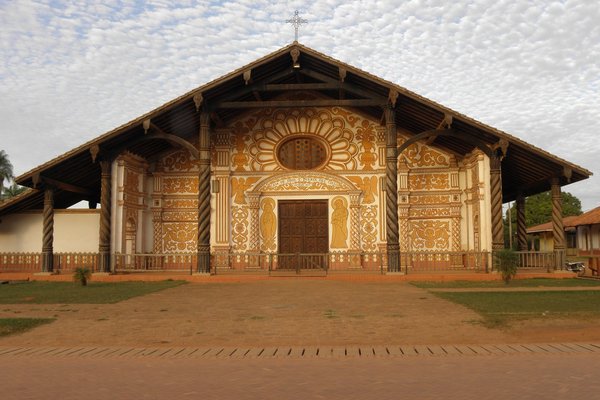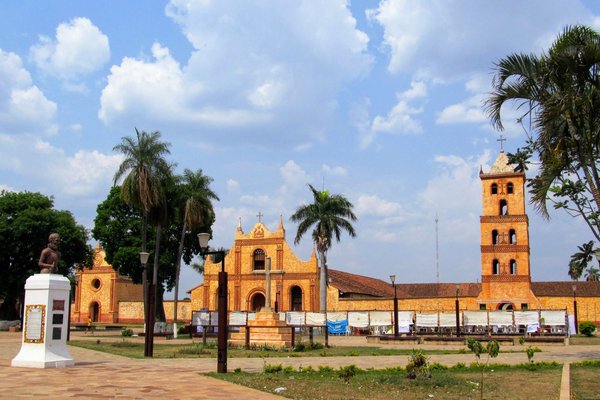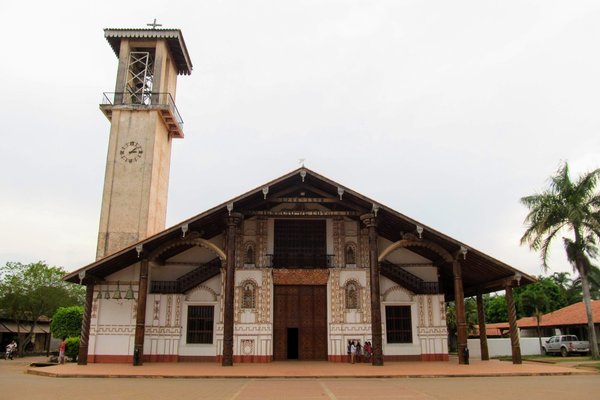Bolivia
Jesuit Missions of the Chiquitos
The Jesuit Missions of Chiquitos are a group of six churches that show the adaptation of Christian religious architecture to local conditions and traditions.
They represent the living heritage of the reducciones: theocratic settlements inspired by the “ideal cities” of the humanists. The churches have unique architecture and are mostly made out of wood. They also hold popular art objects from the Chiquitos population.
Community Perspective: Chiquitania is unique, with a slow pace of life, but also tough (“it takes a special kind of people to thrive here”) and often hot. Most reviewers visited only one or two of the churches due to infrequent public transport, but Patrik managed to cover all of them in four days. It’s best to start from San José if you want to do the full circuit. Timonator provides additional tips for that route.
Site Info
Official Information
- Full Name
- Jesuit Missions of the Chiquitos (ID: 529)
- Country
- Bolivia
- Status
-
Inscribed 1990
Site history
History of Jesuit Missions of the Chiquitos
- 1990: Referred
- Assurances required regarding protection
- 1990: Inscribed
- Inscribed
- Type
- Cultural
- Criteria
- iv
- v
Links
- UNESCO
- whc.unesco.org
- Official
-
- misionesjesuiticas.com — Misiones Jesuíticas de Chiquitos
- Related
-
- en.wikipedia.org — Friar Martin Schmid
All Links
UNESCO.org
- whc.unesco.org — whc.unesco.org/
Official Website
- misionesjesuiticas.com — Misiones Jesuíticas de Chiquitos
Related Resources
- en.wikipedia.org — Friar Martin Schmid
Community Information
- Community Category
- Religious structure: Christian
Travel Information
Recent Connections
-
No Map
-
Amazon Basin
San Jose de Chiquitos is on the Piray r… -
U.S. Ambassadors Fund
Documentation of Cultural Objects from …
Connections of Jesuit Missions of the Chiquitos
- Geography
-
-
Amazon Basin
San Jose de Chiquitos is on the Piray river, a tributary of the Yapacani and then the Amazon. -
Antipodes points
Vigan - Jesuit Missions of the Chiquitos
-
- Trivia
-
-
Minority communities
Connected to the Chiquitos as well as other tribes in the Santa Cruz province
-
- Architecture
-
-
Wooden architecture
Except for the church in San José, all churches are made out of wood -
Ideal City
The Jesuits were inspired by the humanist Ideal City idea (AB ev)
-
- World Heritage Process
- Religion and Belief
- Human Activity
-
-
Language isolate
ChiquitanoSee en.wikipedia.org
-
- Constructions
-
-
Freestanding Bell Tower
In Concepcion, made out of wood
-
- WHS on Other Lists
-
-
U.S. Ambassadors Fund
Documentation of Cultural Objects from the Colonial Period and After in Eastern Bolivia (2007) -
World Monuments Watch (past)
Assistance to local communities to develop/implement management plan (2010)
-
- Timeline
-
-
Built in the 17th century
first dates from 1696
-
News
No news.
Recent Visitors
Visitors of Jesuit Missions of the Chiquitos
- Alejandro Lau
- Ammon Watkins
- Andrew0181
- Bamse
- basementonline
- Carlos Sotelo
- Daniela Hohmann
- Els Slots
- emvcaest
- Erik Jelinek
- Feldhase
- Harry Mitsidis
- Iain Jackson
- Jens
- João Aender
- Joel on the Road
- KateY
- Lameduck99
- Loic Pedras
- Luis Filipe Gaspar
- nan
- Patrik
- Roman Bruehwiler
- Sandmann15
- Sergio Arjona
- Shandos Cleaver
- sibariam
- stephanvermeulen
- Tevity
- Thomas van der Walt
- Timonator
- Weecheng
- Zoë Sheng
Community Reviews
Show full reviews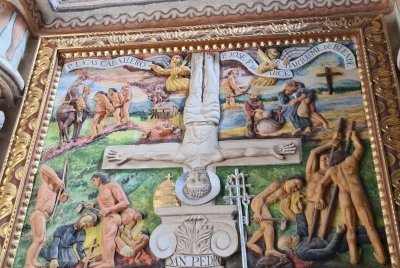
From Santa Cruz we took the 11 o'clock flota (big bus) from terminal bimodal to San José. On thursdays there is also a train service for this route. In San José I can recommand to stay at the hotel Las Charapas a bit outside the center, which is run by Johan who is super nice and caring for his guests. Also the place is beautifully clean with a pool behind which a lot of tucans are living in this time of the year. We got a double room for 235 BOB a night. At the church next to the big plaza in San José we met Oseas after the service who was educated as priest but now is the gatekeeper of the church. He happily shows you around the church if you ask for him. We checked out the museum the next day, which has material for at least 5 hours to read through if your Spanish isn't so good but it's hard to filter out the interesting bits. It's hosted in the Colegio next to the church. The church itself is the only stone church of the WHS- the others are made of wood. The material was available from a nearby hill. At night the church is beautifully illuminated. A tip outside the WHS scope follows. At Johan's place we met Peter Neufeld who lives in Campo 26 in the huge Mennonite colony Nueva Esperanza on the way between San José and San Rafael. On wednesdays he's in San …
Keep reading 0 comments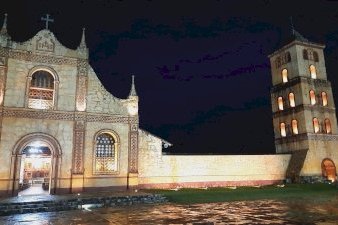
I visited all six churches on the circuit in March 2023. It was not particularly hot, mostly it was clouded and it rained every afternoon, which made the afternoons often cooler than the mornings. I entered Bolivia from Brazil, crossing the border between Corumba and Porto Quijarro. The passenger trains between Santa Cruz and Porto Quijarro have not been running for two years but there are busses leaving around 11 am (and there are night busses too). I took one of the busses, it was rather comfortable, if not too clean, and the bus dropped me off around 17.30h in San Jose. It was a Sunday afternoon and seeing the church open, I entered the church with my lugguge. The sight of the church made my heart jump a little in surprise. All churches would have that effect on me, except the one in Concepcion, which made a more reconstructed impression.
The church in San Jose is a brick structure, unlike the other ones. The courryard has beautiful naive paintings. While I was admiring the interior, a procession entered the church and the priest started to speak. I left with my luggage and found a hotel a little off the square, which was not too expensive and still had all the comforts. After that I came back and was happy to find the church open and empty. The church exterior is very beautifully lit at night.
I took a quiet day of rest on Monday where I visited …
Keep reading 0 comments
Visited in Oct 2018. Unlike the other reviewers we chose to go east and started our visit at San Jose after a hot 4 hour bus ride from Santa Cruz. It was 40C and our bus attendant's idea of aircon was wedging the door open with pop bottles as we drove down the highway. Connections to San Jose are good via train or bus since it is on the main road to Brazil. This is hot, tough country and it takes a special kind of people to thrive here which is probably why most of the settlements and people we saw along the way were Mennonites.
From the bus station it was about a 20 min walk to the main plaza and the church. Unlike the others it is unique in that it is larger and has a stone facade, which looks a little strange on the wooden church, and is walled compound. We relaxed a bit in the shade of the plaza watching the lethargic movements of the towns folk while waiting for the afternoon opening of the church. Finally we saw someone setting up a stage in the plaza and running cords through one of the doors so we got in to the courtyard of the complex. There is a museum on one side but it didn't look like it would be opening for us anytime soon but we got into the dark church interior for a quick look. The woodwork is nice but unsure if we were …
Keep reading 0 comments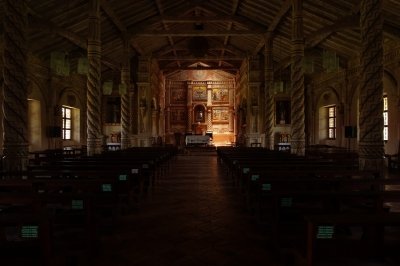
The Jesuit Missions in Paraguay and Argentina had really smitten me on my previous visit to South America. When I had the chance to see their Bolivian counterparts, it was a must visit for me. Being based in Santa Cruz I decided to venture as a day trip to San Javier and try to get to Concepcion while making my way back to Santa Cruz by nightfall.
My plan didn't quite work out as I was unable to find a ride to Concepcion from San Javier. The heat that day was unbearable and eventually I settled on returning to Santa Cruz.
In comparison to the sites in Argentina and Paraguay I visited in 2016, San Javier is in way better shape. The church is still original as is the city planning including some original houses. Especially the wood art in the church was amazing (see picture). On the other hand the scope of the settlement seemed smaller than those found in Missiones. And the Indiana Jones feeling of the jungle covered ruins of San Loreto never materialized.
Getting There
If you plan to do this on a daytrip from Santa Cruz you have two options:
For both options you can catch a bus at Terminal Bimodal. Please note that there may be multiple operators with different schedules. Seeing there is little information available online, it may …
Keep reading 0 comments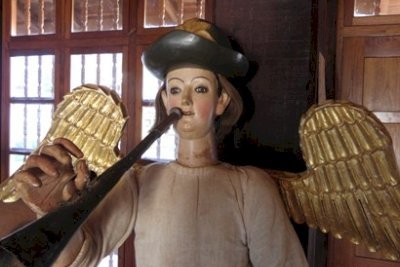
The eastern Bolivian landscape changes from ca. 30km before San Javier: the flat farmlands that surround Santa Cruz give way to light-green tropical plants and hills. This is Chiquitania, and they want you to know: signs along the road describe the history of the region and its Jesuit missions.
For my visit to the missions, I stayed in the Gran Hotel Concepcion for 2 nights and visited Concepcion and San Javier from there. Concepcion is the more atmospheric of the two towns. It has a fabulous square plaza, just like the Jesuits designed it. I started my visit at the Mission Museum – a great start as it has stories and models of all missions. And lots of woodwork that came from several churches. I especially liked the angels!
Somewhere I had read that the churches are only open for mass, but fortunately, that’s untrue. In Concepcion you can enter the church from the adjacent church museum. And the interior even is more lovely than the colourful outside would suggest. It has both paintings and wooden sculptures in a naïve kind of style. Not something you would see in your average Spanish (colonial) catholic church. And then there is that bell tower, all made out of wood.
On the same day, I also visited the church of San Javier – about an hour away by bus. Although it has a similar design as the one in Concepcion, there are a lot of differences too. I was lucky …
Keep reading 0 commentsGeoffrey A. P. Groesbeck
Jesuit Missions of the Chiquitos
Jesuit Missions of the Chiquitos (Inscribed)
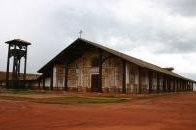
This entire area - formerly Chiquitos and now enlarged to include all of the Chiquitania - is a region with a unique culture, history, people, and environment. The product of a remarkable fusion of two civilizations, European and native American, its fascinating legacy remains intact to this day. Its world-famous Jesuit mission churches - six of which were designated World Heritage Sites by UNESCO in 1990 are only the best-known of many expressions of this rich synthesis of cultures.
Others include its music (the famous Festival de Música Barroca y Renacentista Americana "Missiones de Chiquitos"), celebrated in world-famous festivals held every other year since 1996 throughout the region's major towns; an astounding heritage of sacred art and architecture; abandoned colonial ruins slumbering in pristine settings; and a wealth of centuries-old customs and folklore handed down from one generation to the next that still play a dominant role in the region's daily life.
Visitors usually come to marvel at the unique ten Jesuit mission settlements, and especially their churches, seven of which survive in astonishing glory, lovingly restored in every detail - each a breathtakingly beautiful architectural wonder and spiritual monument set in the midst of an idyllic wilderness.
Others come for the colonial ambiance, still evident in these towns' spacious plazas and slow pace of life. Some come for the colourful folklore and traditions maintained here and nowhere else. Still others come for the beautiful, hand-wrought art that has fascinated collectors and scholars for centuries.
Yet there is more than …
Keep reading 0 comments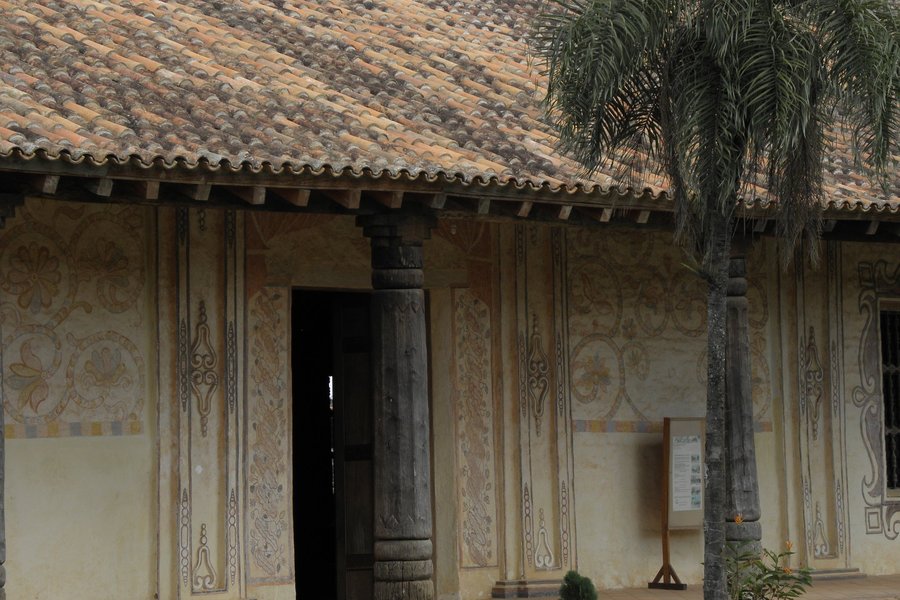
As a Catholic Missionary in nearby Santa Cruz de la Sierra for the last 18 years, I have been to the Jesuit Missions serveral times, especially San Javier and Concepción which are now only 3-4 hours drive on paved roads. The restored Church's and other structures, the abundant wood carving, the music and musicians, the local cultures and tropical scenery, all surprise for their beauty and for the history they represent. They are certainly well worth the trouble to visit.
Keep reading 0 comments
